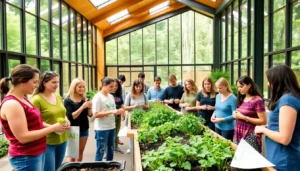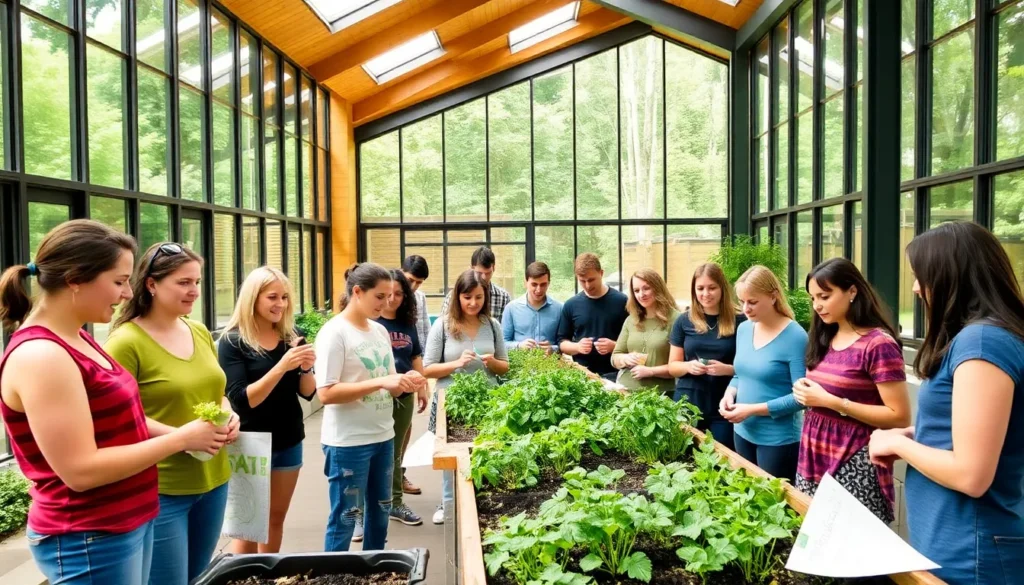Table of Contents
ToggleImagine a world where your favorite household products come with a touch of eco-friendliness. Sounds good, right? The Unilever Sustainable Living Plan (USLP) promises just that, and more. With a mission to make sustainable living commonplace, Unilever is transforming its business strategy to protect the planet and improve people’s lives. This isn’t just corporate jargon: it’s a serious exploration of how one of the largest consumer goods companies aims to balance profit and planet without losing sight of its values. So, let’s jump into the nitty-gritty of this ambitious plan, because saving the world should be more than a pipe dream.
Overview of the Unilever Sustainable Living Plan

Unilever’s Sustainable Living Plan is more than just a fancy name: it’s a blueprint designed to tackle some of the world’s pressing issues. Launched in 2010, the plan integrates sustainability into every aspect of Unilever’s business operations. The initiative is focused on three main pillars: improving health and well-being, reducing environmental impact, and enhancing livelihoods. Essentially, it aims to create a world where everyone can thrive without depleting the resources we have left. The overarching goal is to double the size of Unilever’s business while reducing its environmental footprint, a tall order, but one that a company this innovative seems to relish.
Key Objectives and Goals
At its core, the USLP is driven by four key objectives: improving health and well-being for one billion people, reducing Unilever’s environmental footprint by half, enhancing the livelihoods of millions through inclusive business, and promoting sustainable practices throughout their supply chain. These objectives are not just lofty ambitions but measurable goals that guide every action Unilever takes.
Impact on Environmental Sustainability
Environmental sustainability is non-negotiable for Unilever. The company aims to source 100% of its agricultural raw materials sustainably by 2025. Given that agriculture accounts for a significant chunk of global emissions, this goal will have a tremendous positive impact on the environment.
Water Usage and Conservation Measures
Water, a critical resource, is under immense pressure worldwide. Unilever recognizes this and is committed to halving its water use across its value chain by 2030. Through various conservation measures, the company is striving to create products that require less water for both production and consumer use.
Reduction of Carbon Footprint
Unilever is on a mission to ensure that its global products have a net-zero emissions footprint by 2039. This ambitious target involves optimizing manufacturing processes, switching to renewable energy sources, and changing transportation methods to more eco-friendly options.
Waste Management and Circular Economy Initiatives
Waste is another significant issue. By 2025, Unilever aims to make all its plastic packaging recyclable, reusable, or compostable. Circular economy initiatives are key to this goal, focusing on developing a closed loop for materials to reduce waste effectively.
Social Impact and Community Engagement
Beyond environmental sustainability, Unilever understands the importance of social impact. The company strives to engage with communities to foster development and empowerment.
Empowerment of Women and Diversity
One of the standout initiatives under the USLP focuses on empowering women. Unilever aims to enhance the livelihoods of at least 5 million women by providing training, resources, and employment opportunities, so encouraging gender equality across its supply chain.
Health and Well-being Initiatives
Also, Unilever is involved in various health and well-being initiatives aimed at improving public health. From offering affordable hygiene products to educating communities about nutrition, these efforts are essential components of Unilever’s holistic strategy.
Economic Development Through Sustainable Sourcing
Sustainable sourcing is pivotal for strengthening economic development. By investing in local farmers and communities, Unilever not only ensures a consistent supply of raw materials but also uplifts these communities economically. Sustainable sourcing helps farmers adopt better farming practices, thereby improving their yield while respecting ecological boundaries.
Collaborations and Partnerships for Greater Impact
Collaboration is crucial for the USLP to succeed. Unilever partners with NGOs, governments, and other organizations to amplify its impact. These partnerships allow for sharing best practices and innovative ideas to tackle sustainability challenges effectively.
Measuring Success: Metrics and Reporting
Measuring progress is essential. Unilever employs various metrics to assess the impact of its initiatives under the USLP. Regular reporting serves not only to keep stakeholders informed but also to ensure continuous improvement and transparency.
Challenges Ahead and Future Directions
While the USLP lays out an inspiring roadmap, challenges abound. Climate change, economic instability, and shifting consumer behaviors pose significant hurdles for Unilever. But, the company remains committed to its goals and is constantly strategizing new ways to adapt to these challenges. Embracing digital transformation, exploring innovative technologies, and rethinking supply chains are just a few strategies Unilever is implementing to navigate future uncertainties.










